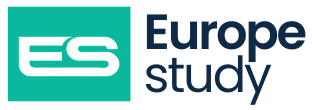
EU to Roll Out New Entry/Exit System to Strengthen Border Security and Immigration Compliance
While immigration enforcement remains a top priority in the United States, global efforts—especially within the European Union—are also ramping up. Notably, the EU is set to launch the new Entry/Exit System (EES) on October 12, which will enhance border control measures across the Schengen Area's 29 countries, including Switzerland.
The EES will be rolled out in phases and will replace traditional passport stamps with a digital system that collects biometric data—including fingerprints and facial images—at the EU’s external borders. Full implementation is expected by April 10, 2026.
This system aims to:
- Streamline border checks through automation.
- Track traveler movement more accurately.
- Strengthen security by giving authorities access to biometric and travel data.
- Curb overstays and irregular migration by monitoring the 90/180-day rule for non-EU travelers.
The EES applies to non-EU nationals, including U.S. passport holders, whether or not they need a visa for short stays. It will allow authorities to detect travelers who exceed their permitted stay and could result in fines or prosecution for violations.
However, certain groups are exempt from EES registration, such as:
- Irish and Cypriot nationals.
- Non-EU family members of EU citizens with residence rights.
- Individuals on specific assignments like corporate transfers, education, or research.
- Holders of long-stay visas or residence permits.
- Nationals of Andorra, Monaco, San Marino, and the Vatican.
- Diplomats and individuals with special border privileges.
As this system comes into effect, companies are advised to revisit and refine their corporate travel and remote work policies. It's not only the duration but also the nature of work performed during international trips that may impact compliance requirements.
With extensive experience in EU regulations, Clark Hill’s Global team offers strategic guidance to help businesses manage visa needs, create compliant travel policies, and stay ahead in a changing regulatory landscape.
Disclaimer: This summary is for informational purposes only and does not constitute legal advice. Readers are encouraged to consult legal professionals for specific guidance.
Source: Clark Hill – Immigration Compliance Update on EU Entry/Exit System





